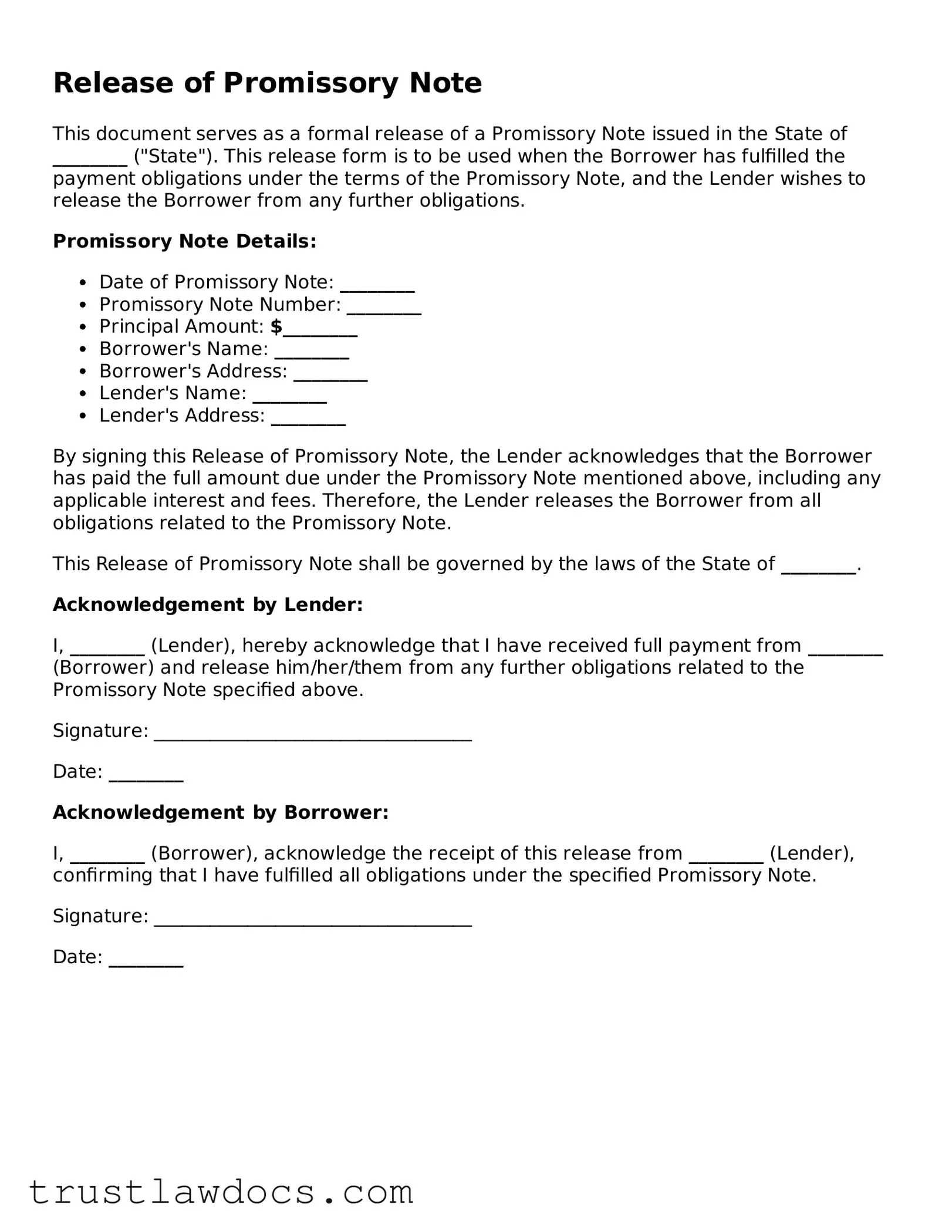What is a Release of Promissory Note form?
A Release of Promissory Note form is a document used when a borrower has fully paid off a loan to the lender. This form officially releases the borrower from any further obligations under the promissory note, which is the original agreement where they promised to pay back the borrowed money. It serves as a legal proof that the debt has been satisfied.
When should I use a Release of Promissory Note form?
This form should be used as soon as the borrower completes the payment of the loan according to the terms outlined in the promissory note. It's an important step for both parties: for borrowers, to ensure they are no longer liable for the debt, and for lenders, to formally acknowledge that they have received the full payment and closed the loan.
What information do I need to include in a Release of Promissory Note form?
Typically, the form should include the date of the promissory note, the names of both the borrower and the lender, the original amount of the loan, and the date of the final payment. It also often contains a statement that the borrower has fulfilled the obligations of the note, along with both parties' signatures.
Can I create a Release of Promissory Note form by myself?
Yes, you can create this form by yourself, but it's important to ensure that it contains all the necessary and correct information to legally release the borrower from the loan obligations. It may be beneficial to consult a legal forms expert or attorney to ensure the form adequately meets legal requirements and is properly executed.
What should I do after the Release of Promissory Note form is signed?
After the form is signed, the borrower should keep the original copy for their records, and the lender should also keep a copy. It's important to store this document safely as it serves as proof that the loan has been fully paid off. The lender might also need to take additional steps, like notifying a credit bureau, to reflect that the debt has been settled.
Is a Release of Promissory Note form legally binding?
Yes, when properly completed and signed by both the borrower and the lender, a Release of Promissory Note form is a legally binding document. It effectively releases the borrower from their obligations under the promissory note, acknowledging that the debt has been fully paid.
Can the release be revoked once it is signed?
In general, once a Release of Promissory Note form is signed and the debt is settled, the release cannot be revoked. It signifies the end of the parties' obligations related to the promissory note. Any attempt to revive the debt would likely require new agreement unless the release was obtained through fraudulent means or significant error.
